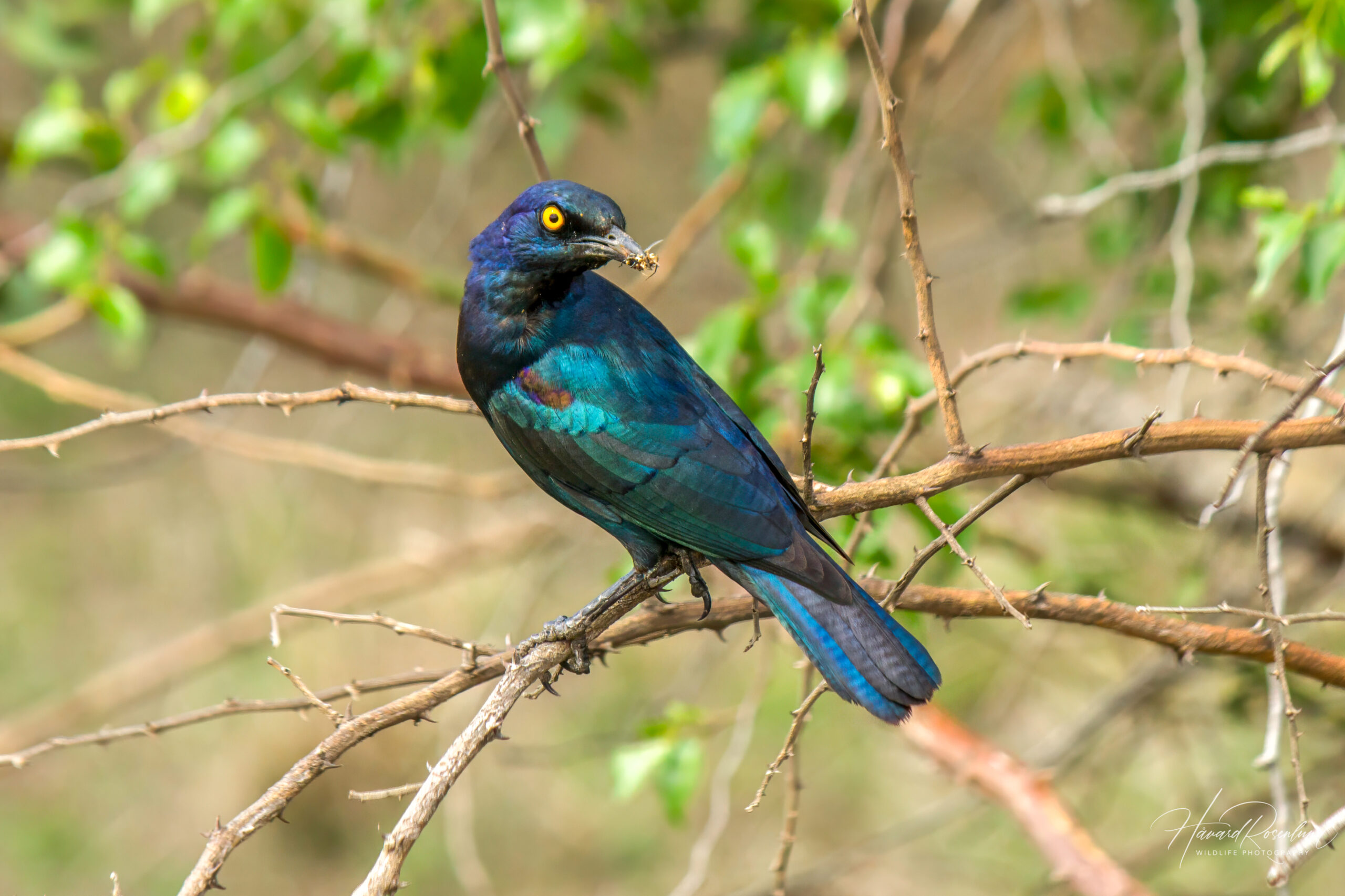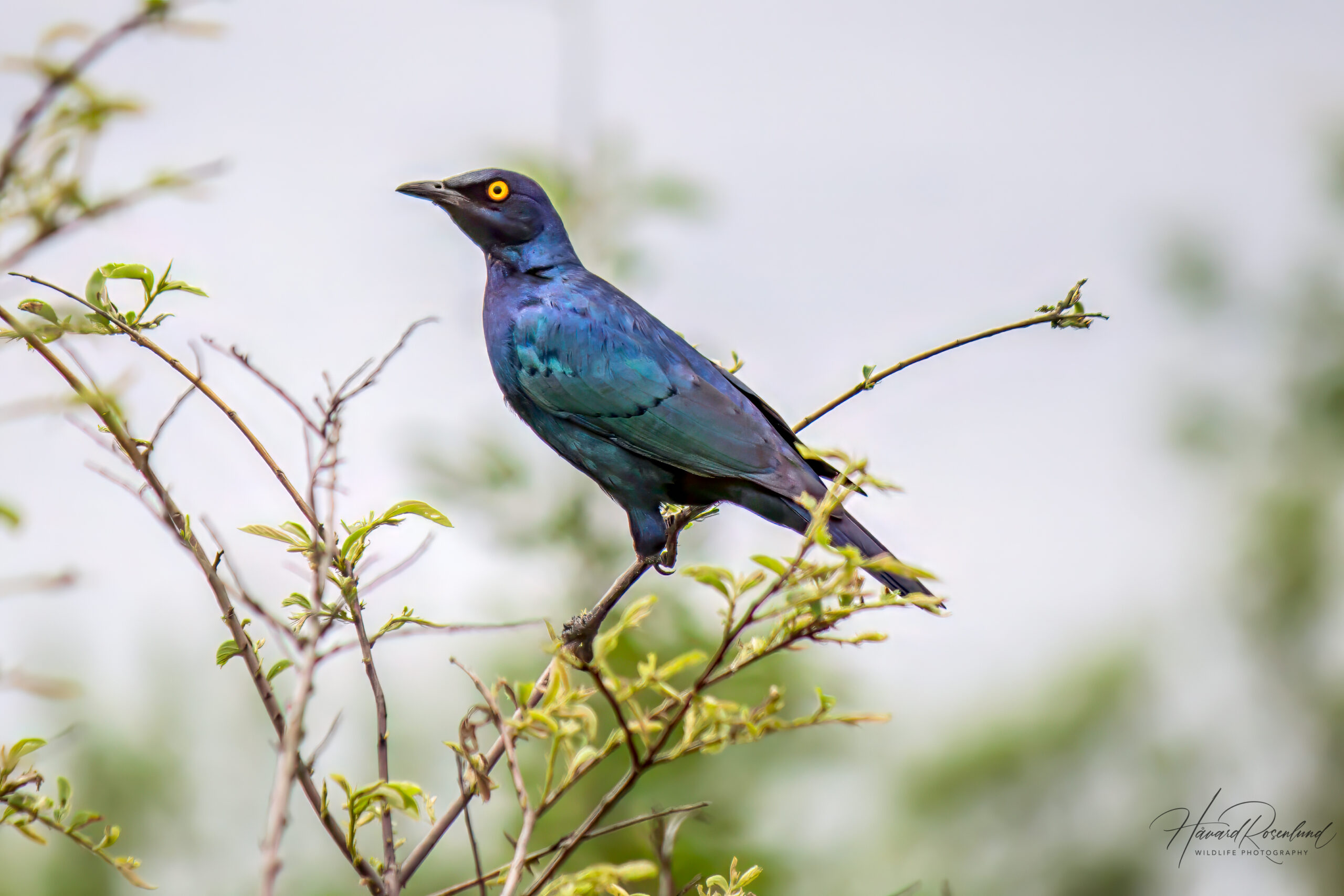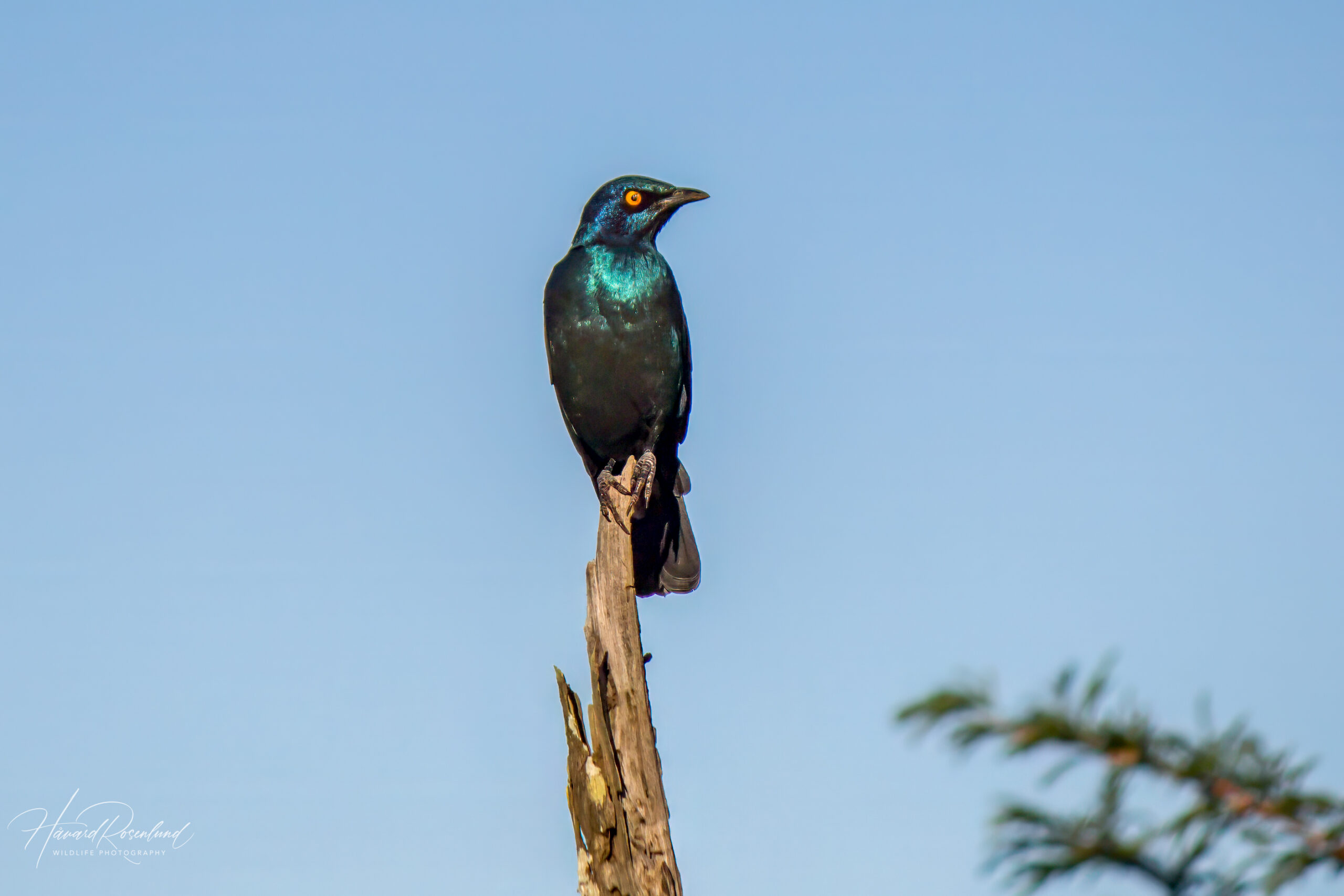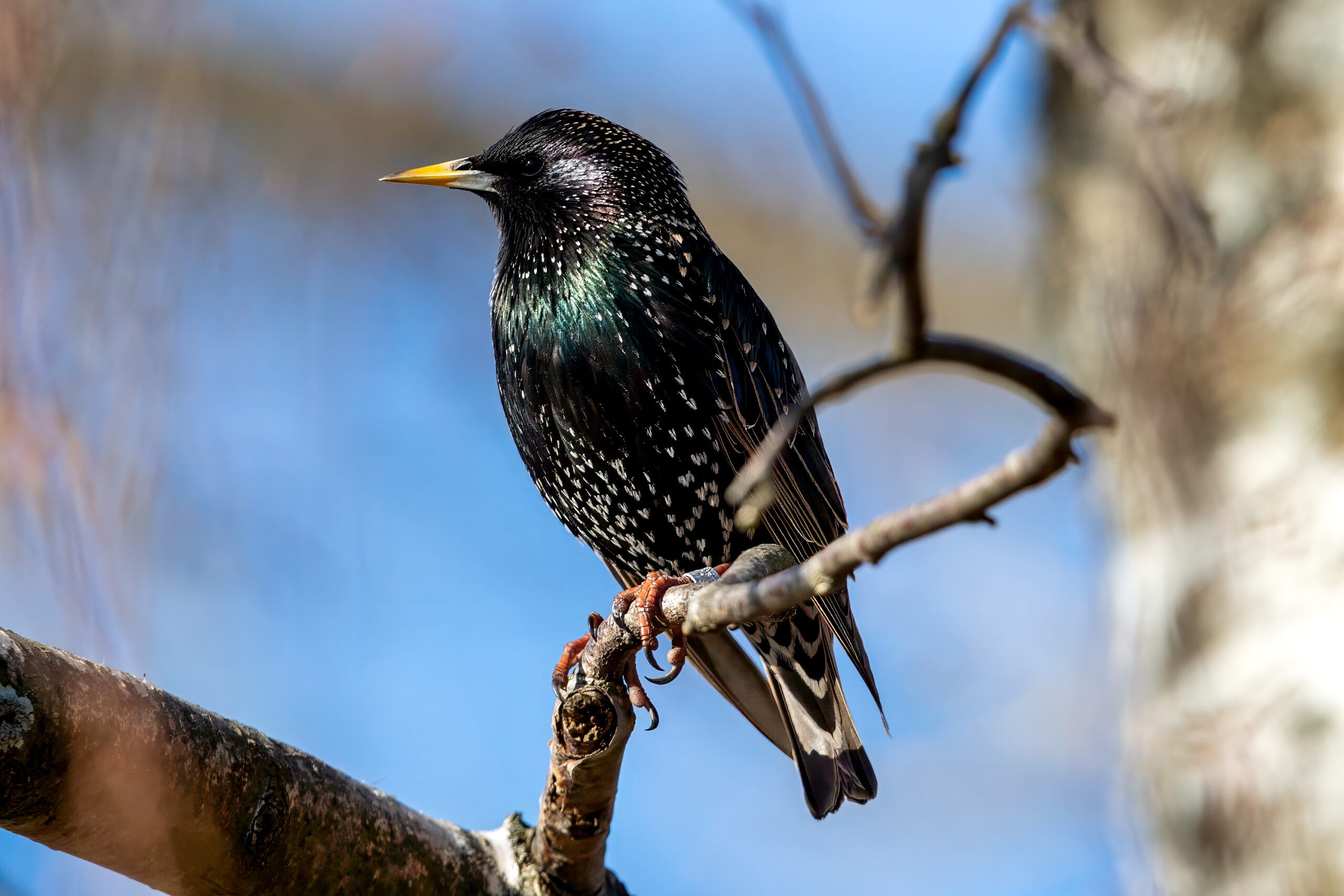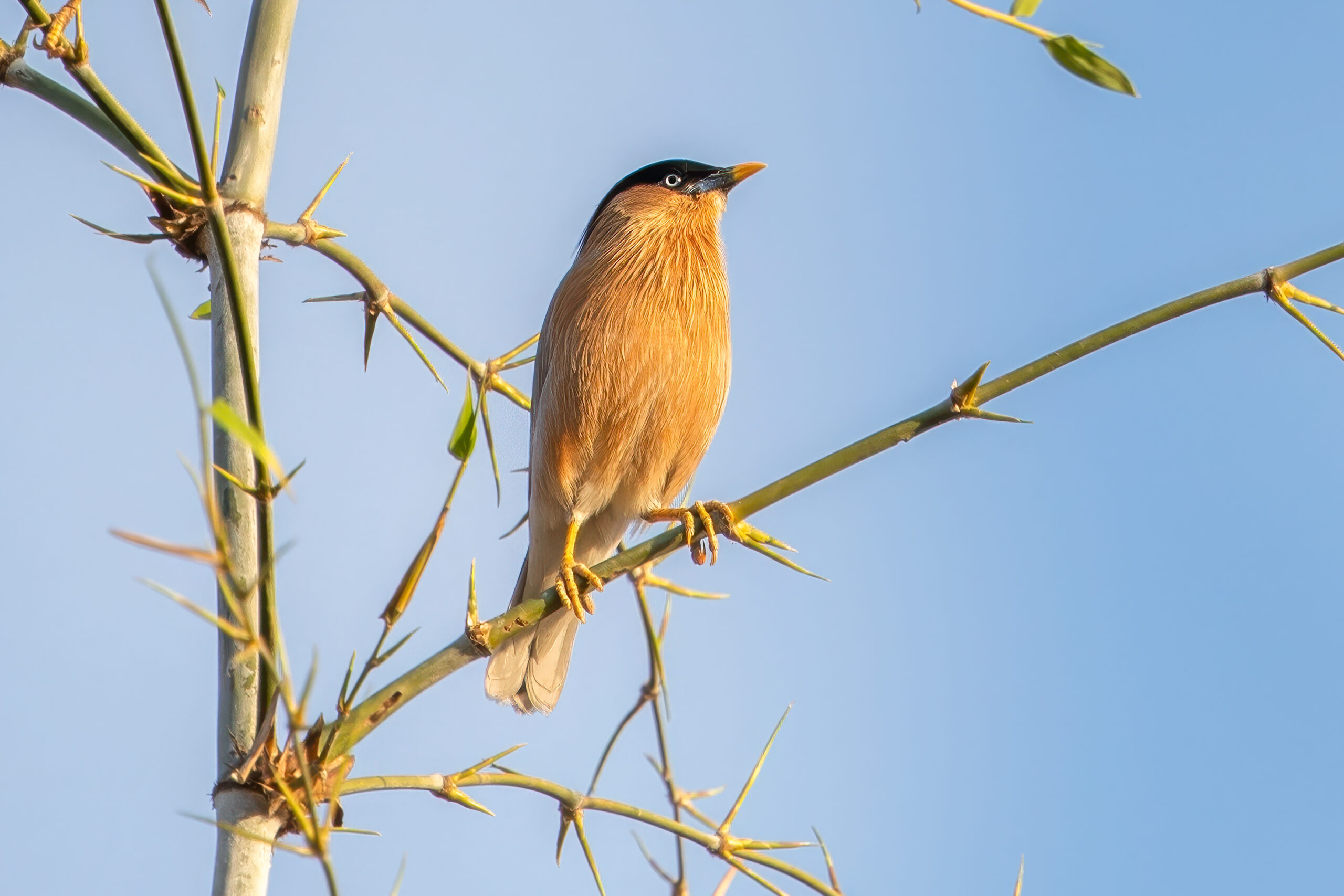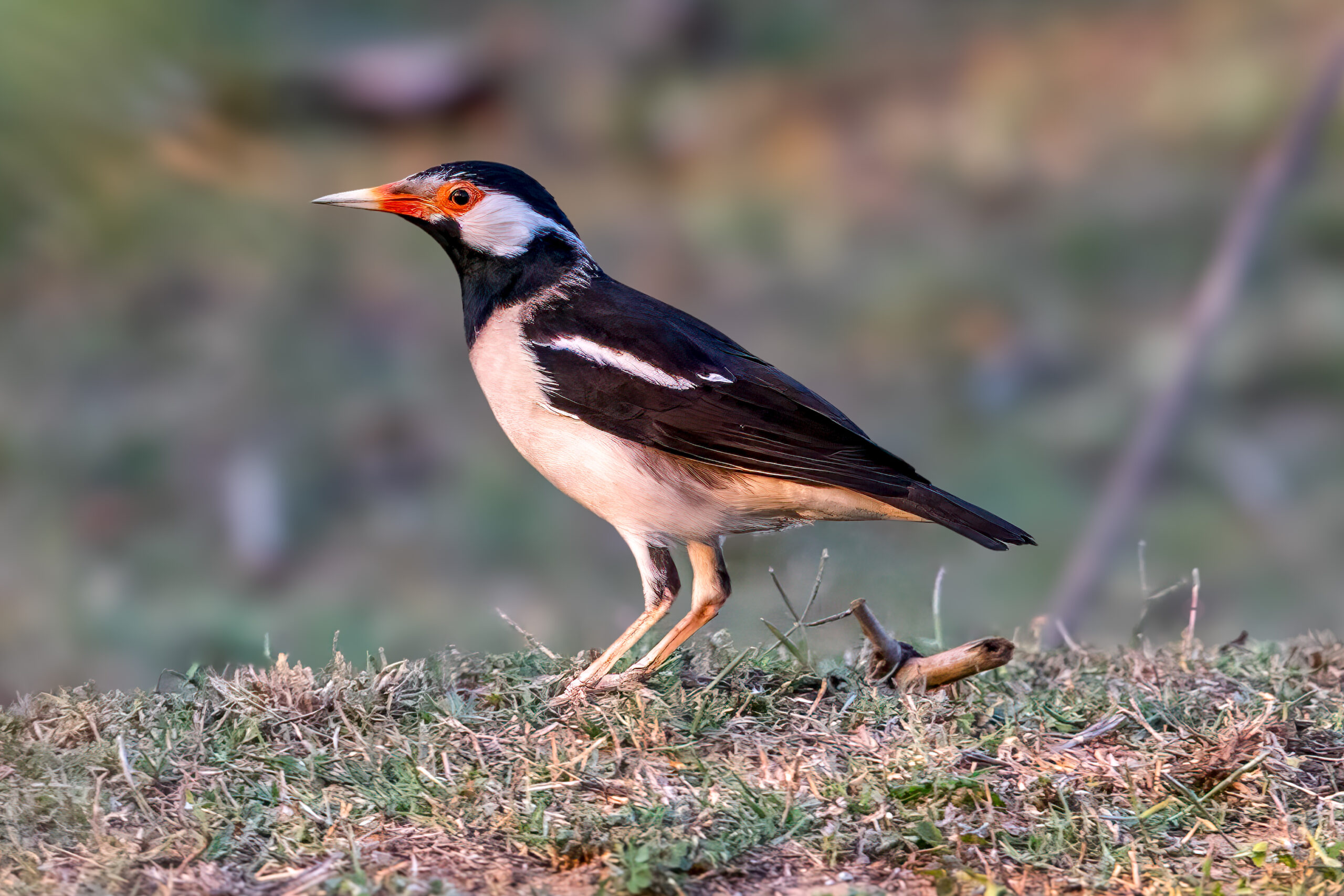Description
The Cape starling (Lamprotornis nitens), also known as Cape glossy starling or red-shouldered glossy starling, is a striking bird native to southern Africa. Its range extends from Namibia and Angola to South Africa. It is characterized by its iridescent blue and green plumage, with a metallic sheen that makes it stand out in its natural habitat. This starling typically measures about 25 centimeters (10 in) in length, making it a fairly large glossy starling.
It is similar to other glossy starlings in southern Africa, such as the greater blue-eared starling (Lamprotornis chalybaeus), which is slightly smaller and has a black ear-patch. The Burchell’s starling (Lamprotornis australis) is larger and has a dark eye and black face, and the black-bellied starling (Notopholia corusca) is much smaller and more compact, and has a black non-glossy belly. The reddish-bronze shoulder-patch is also a telltale sign of the Cape starling, even though it is not always visible.
Diet & habitat
The Cape starling is known for its adaptability and can be found in a variety of habitats, including open woodlands, savannas, and even human-dominated landscapes like gardens and parks. Its diet mainly consists of fruits, nectar, and insects. They forage in groups, often seen hopping on the ground or flitting through foliage, skillfully extracting their food. These starlings have been observed participating in anting behavior, where they allow ants to crawl on their bodies, possibly to help with feather maintenance.
Nesting
Breeding season for the Cape starling typically occurs during the wet season, when food is abundant. These birds are monogamous and engage in elaborate courtship displays, involving singing and aerial displays. Nesting usually takes place in natural cavities like tree holes, where the female lays 2-5 eggs. Both parents take part in incubating the eggs, which lasts about 13-14 days. The fledglings remain in the nest for approximately 21-23 days before venturing out, still under the watchful eye of their parents.
Status
The Cape starling has a wide distribution and adapts very well to various habitats, including those altered by humans. It is not at immediate risk of population decline and is listed as least concern on the IUCN Red List.




